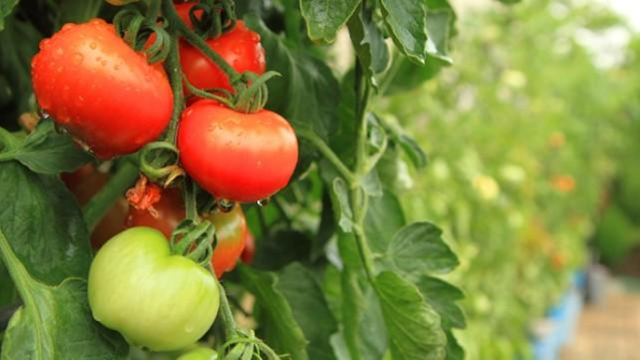Tomato Cultivation Guidelines In India:-
There are so many methods for cultivating tomatoes. In India, many states grow tomatoes at a very large scale and export their tomatoes to other countries also There are many conditions for cultivating tomatoes or any other crop. Let us find the best method for this and increase our productivity.
India's Top tomato producing states are Uttar Pradesh, Orissa, Maharashtra, Andhra Pradesh, Bihar, Karnataka, Madhya Pradesh and West Bengal, Punjab is also a tomato growing state on a very large scale.
For the procedure of tomato cultivation, it needs equipment that should be reliable for every Indian farmer; therefore, we suggest the Eicher 333 tractor, which is predictable according to farmers and the best usable in farming. Along with this, Eicher 380 is also the best tractor.
Advantages of Growing Tomato
Over Other Crops:-
●
The
tomato crop is a short duration vegetable crop.
●
Farmers
can grow the tomato in outdoor and indoor conditions.
●
Tomato
cultivation is fitted in different cropping systems of pulses, cereals,
oilseeds and grains.
●
Tomatoes
are nutritionally valuable for their vitamin and high mineral content.
●
As a
result, you can use the tomato widely in several processed items, prepared on a
large scale for consumption and export purposes.
Tomato Cultivation - Climate
Requirements
The temperature of 10°C to 25°C is considered good for tomato cultivation. The ideal sowing temperature is 10℃ to 15 °C and 400 mm to 600 mm of rainfall. The best quality tomato red colour develops at 21°C to 24°C temperature.
Tomato
Cultivation - Soil Requirements & Land Preparation
Tomato grows well on many soils, but it grows particularly well on deep, well-drained soils with good drainage ability. Medium black soils, sandy loam and red soils are considered the best for tomato cultivation. For good yield from this crop, the pH of soil must be at 7-8.5.
For tomato plantation, you can prepare the land for farming by thorough ploughing 4-5 times and levels. At the last ploughing, add decomposed cow dung and Neem cake (8kg) or Carbofuran (5kg) per acre for optimal soil preparation.
Transplanting
& Management
Before sowing, farmers should soil solarize for one month to destroy harmful soil-borne pathogens, pests, and organisms. This can be done by using the transparent plastic film as mulch (Plastic sheet absorbs radiation and consequently increases soil temperature and kills pathogens).
After
this, they can sow the seeds in 80-90 cm wide and convenient length beds. After
the farmer sows the cover bed with mulch, irrigate the bed daily in the
morning.
Seedlings prepare for transplantation 25 to 30 days after sowing. Water the seedling bed 24 hours before transplanting so that the seedlings can easily take root. To protect the crop from bacterial wilt, immerse the seedlings in 100 ppm Streptocycline solution for 5 minutes before transplanting.
Tomato
Cultivation - Sowing Process
●
For
northern states, farmers cultivate the tomatoes in late November for the spring
season, and they transplant them in the second fortnight of January.
●
For
autumn, crop sowing is done in July-August and transplanting is done in
August-September. In hilly areas, sowing is done in March-April, and
transplanting is done in April-May.
●
on the crop variety
and its growth, it should maintain a spacing of 60x30 cm or 75x60 cm or 75x75
cm. In Punjab, use 75 x 30 cm spacing for dwarf
varieties and 120-150 x 30 cm for the rainy season.
●
In a
nursery, farmers should seed the sow at a depth of 4cm and then cover it with
soil.
● Transplanting of seedlings in the main field is the method of sowing.
Irrigation Requirements
Tomatoes require adequate irrigation at the right time, and thus it is necessary to maintain the supply of moisture to the crop. Irrigation is required every 5 to 7 days in the summer season, whereas irrigation at 10 to 15 days is sufficient in winter. If we provide the best environment to the plants at the right time then its result becomes more beneficial.
Fertilizer & Nutrient Requirements for Tomato Crop
During the land preparation, mix rotten cow dung (10 tons/acre) in the soil.
Nutrition
Facts and Health Benefits of Tomato
●
Tomatoes are a better source of fibre. Fibres are a good
source of energy.
● Fibres are converted into glucose and maltose which are
more beneficial for our body
●
Tomatoes
are a big source of the antioxidant lycopene, it has many health
benefits, including reduced cancer and heart disease risk.
● Tomato has become a great source of vitamin C, potassium, folate and vitamin K.
Healthy food is a must for every human being; therefore, farmers should be careful of this cultivation; thus, they should use the best tractor, implements, and harvester. For this cultivation, we suggest the Sonalika 60 tractor, which is very effective in farming. If you want to know more about tomato cultivation or other farming activities. This is the right place for taking knowledge and making your health better.
For more information regarding healthy foods, and cultivation of tomatoes and any other farming, stay tuned with us.










0 Comments